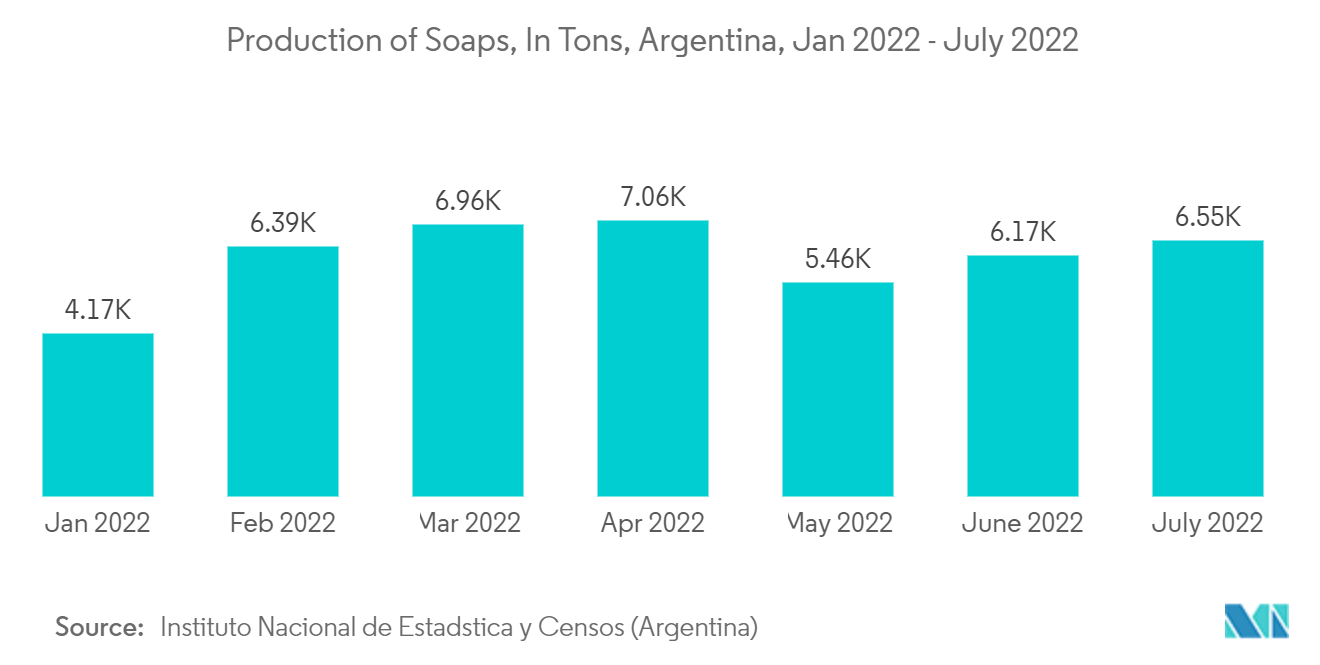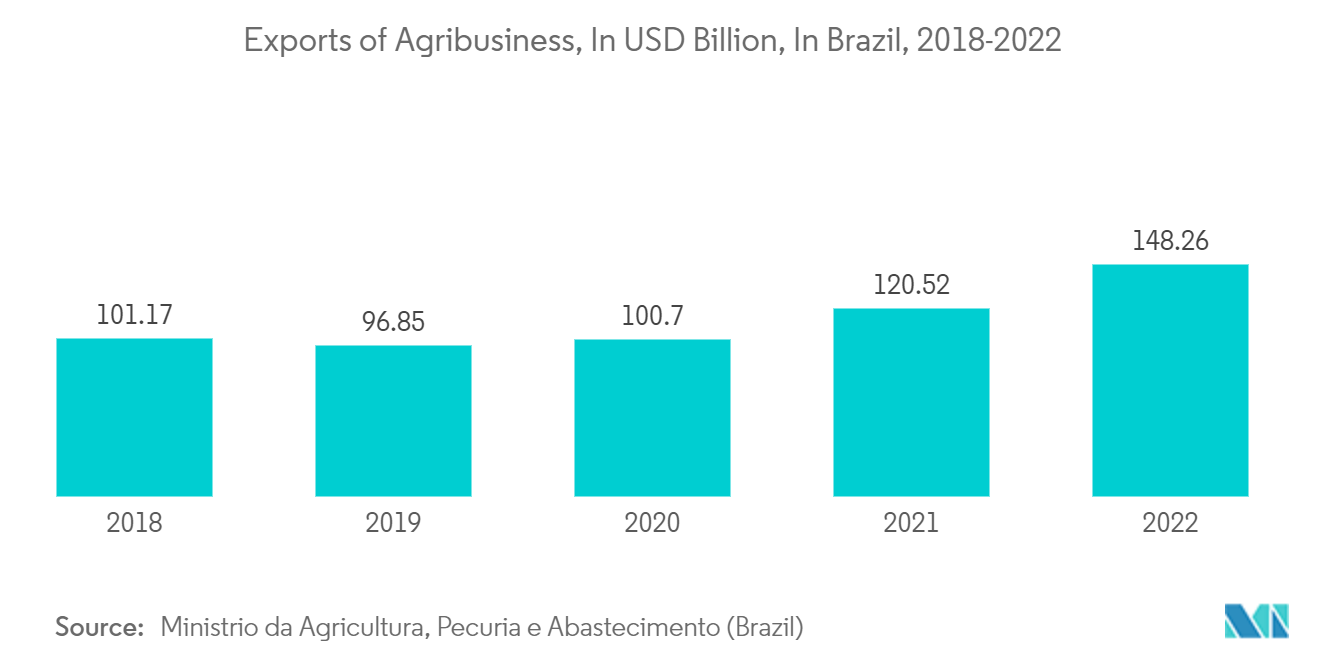Market Trends of Latin America Surfactants Industry
This section covers the major market trends shaping the Latin America Surfactants Market according to our research experts:
Growing Demand from Household Soap and Detergent Application
- Detergent is usually a mixture of surfactants used mainly for the purpose of cleaning and is available in varying dilutions. It consists of alkylbenzene sulfonates, which have chemical properties similar to soap but with higher solubility in hard water.
- Detergents are classified in terms of their ionic properties, namely anionic, cationic, and non-ionic. The soap mentioned in the segmentation deals mainly with washing and laundry applications.
- The laundry care market in Mexico is growing gradually, owing to the increasing awareness of household hygiene, which is also expected to propel the market studied during the forecast period. According to INEGI (Instituto Nacional de Estadistica, Geografia e Informática), bar soap production in Mexico will reach approximately 22.38 million units in 2021, a 3% increase from 21.72 million units in 2020.
- Furthermore, according to the Instituto Nacional de Estadística y Censos (Argentina), the production of soap (toilet and laundry) was 6,547 tons in July 2022, an increase of 6% as compared to 6,173 tons in June 2022. Meanwhile, the production of detergents and cleaners (which includes bleach) in the first 7 months of 2022 was roughly 489.63 thousand tons.
Surfactant usage and demand for household soaps and detergents are expected to increase during the forecast period due to the aforementioned factors.

Brazil to Dominate the Demand
- Brazil was the leader in the Latin American market for surfactants because of its growth and investments in cleaning at home and in businesses, agriculture, food processing, and the personal care industry. All of these industries needed surfactants.
- As the most significant in Latin America, the country is among the major cosmetic markets globally. Statista says that the beauty and personal care market in Brazil will bring in USD 23.29 billion in 2023, with a 7.30% annual growth rate.
- In agricultural applications, surfactants are added to pesticides and other insecticides, helping to improve the performance quotient of the chemicals. According to the Ministério da Agricultura, Pecuária e Abastecimento (Brazil), in 2022, Brazil's agribusiness exported goods and services worth over USD 148.3 billion, a 23% rise from 2021, with soybeans and their products leading the pack, followed by meat and forestry products.
- Surfactants are also often used in food and drinks, both as additives or ingredients and as a way to treat surfaces that come in contact with food.It is also used in small amounts to solubilize water-insoluble materials for inclusion in aqueous beverages. According to the Associaco Brasileira das Indústrias da Alimentação, the Brazilian food and beverage industry made about BRL 923 billion (USD 171.19 billion) in net sales in 2021, up from about BRL 789 billion (USD 146.4 billion) the year before.
- Furthermore, due to its biodiversity, Latin America, specifically Brazil, is emerging as a hotspot for biosurfactant research, providing increased potential to discover novel microorganisms capable of producing biosurfactants at a lower cost with higher productivity.
During the next few years, the growth of the surfactant market is likely to be driven by all of the things listed above.

